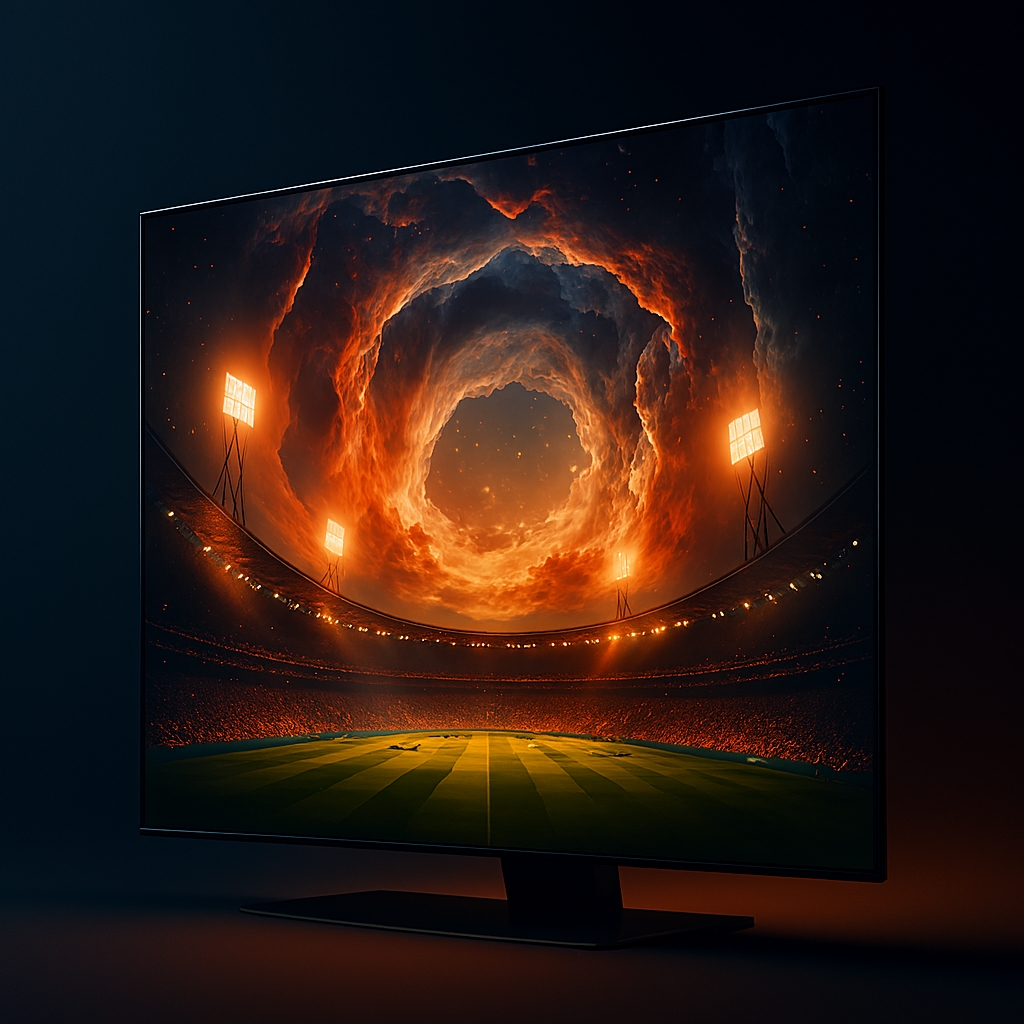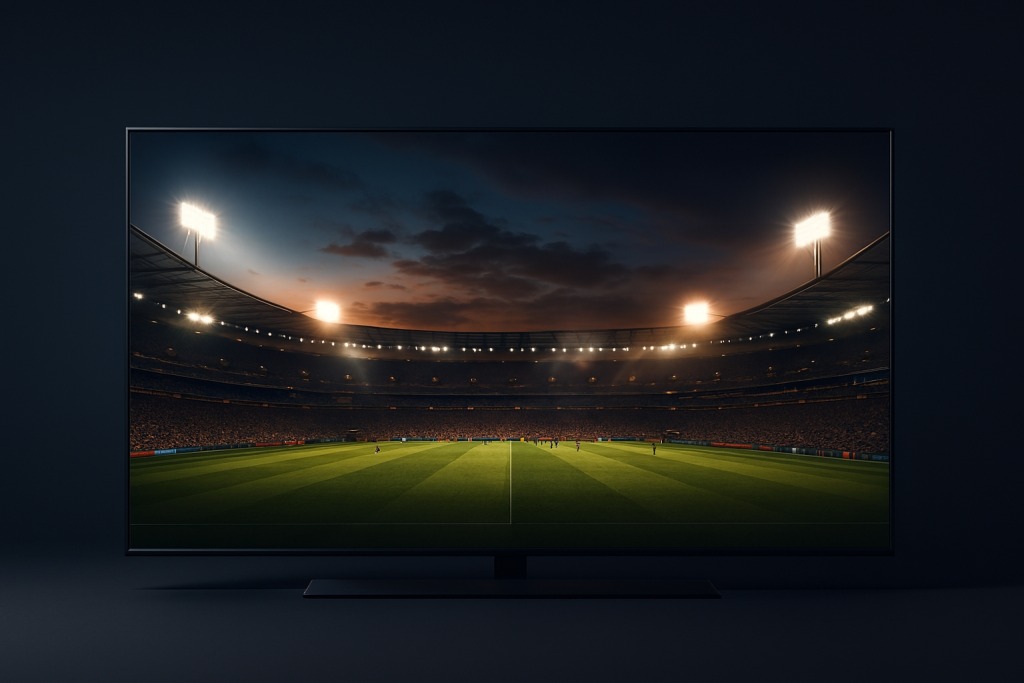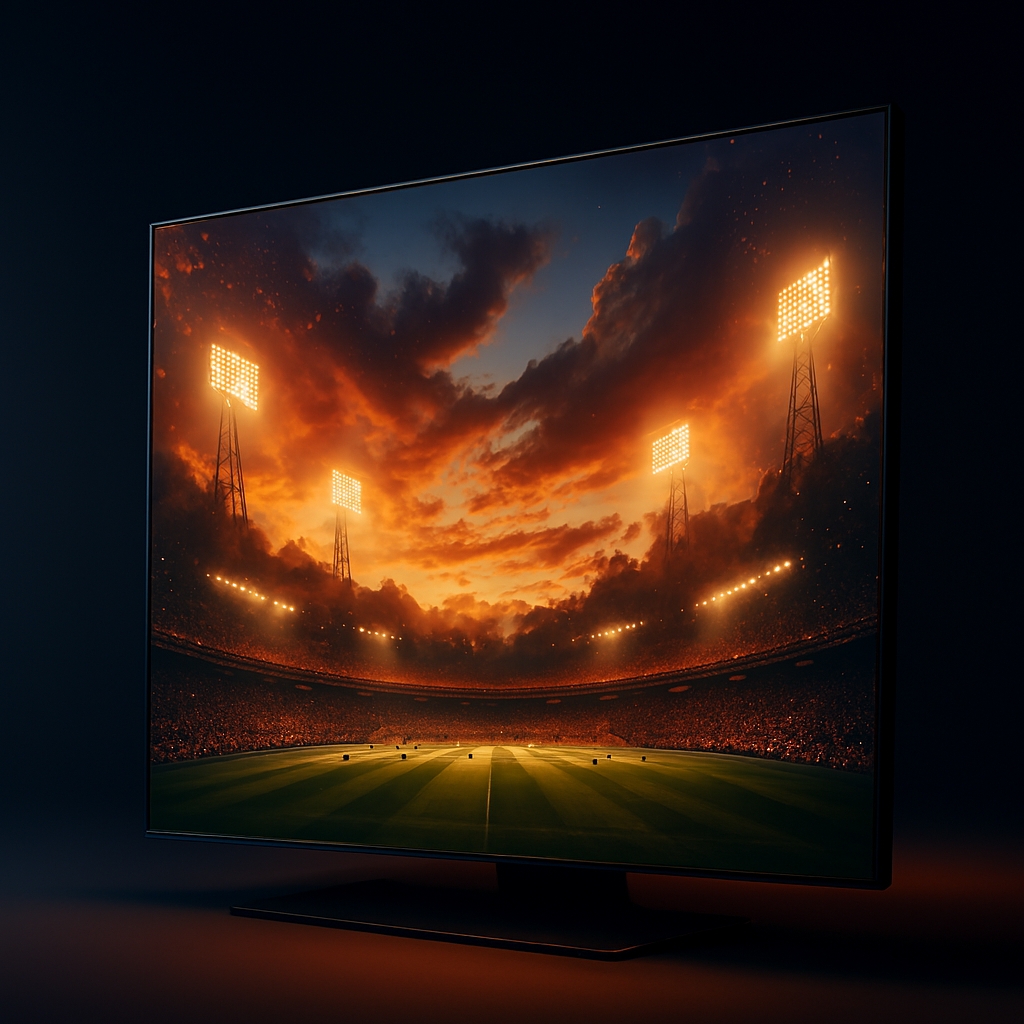From Stadium to Screen – How Specs Shape the Experience
TV for Live Sports
Immersive Viewing Introduction
Watching sports or live sports on a modern television demands more than just screen size or brand recognition. Free-to-air broadcasts and 4K streaming each impose unique technical requirements. Motion clarity, panel response, and broadcast compatibility are critical for immersive viewing. Fast-paced action like football, tennis, or motorsport exposes weaknesses in poor motion handling. Streaming in 4K introduces compression artifacts and codec limitations that better TVs can mitigate.
Brightness, contrast, and upscaling all affect how well a TV renders live sports. Audio sync and refresh rate alignment also shape the realism of the experience. Many TVs advertise features that don’t translate to real-world performance. This guide strips away marketing and focuses on what truly matters. Every section is grounded in technical fact and designed for viewers who care about fidelity.
Panel Technology
OLED panels offer pixel-level lighting control, producing perfect blacks and fast response times. QLED panels use quantum dots to enhance brightness and color volume. Mini-LED panels combine LED backlighting with thousands of dimming zones for improved contrast. IPS panels provide wide viewing angles but lower contrast ratios. VA panels deliver deeper blacks but suffer from narrow viewing angles. OLED is ideal for dark rooms and cinematic sports viewing. QLED and Mini-LED excel in bright environments and HDR content. IPS is better for group viewing where angle consistency matters. VA suits solo viewers prioritizing depth and contrast. Each panel type has trade-offs that affect sports clarity and streaming fidelity.

Refresh Rate
Refresh rate determines how many frames per second the TV can display. A native 120Hz panel shows double the frames of a 60Hz panel, reducing blur. Free-to-air broadcasts in Australia typically run at 50Hz, so 100Hz panels offer smoother motion. Motion interpolation artificially adds frames but can introduce artifacts. Black Frame Insertion improves clarity without smoothing. OLED panels often include advanced motion features like OLED Motion Pro. Fast refresh rates are critical for sports like football and basketball. Streaming platforms may deliver content at 24, 30, or 60fps depending on the source. TVs must adapt to varying frame rates without stutter. True refresh rate—not marketing terms—is what matters.
Response Time
Response time measures how quickly pixels change color. Fast response times help reduce motion blur and ghosting due to how quickly the pixels keep up. OLED panels typically have response times under 1ms. VA panels are slower, often around 4–8ms. IPS panels fall in the middle, averaging 5ms. For sports, low response time ensures crisp ball movement and player tracking. Streaming in 4K benefits from fast pixel transitions during camera pans. Response time affects perceived sharpness in fast scenes. Manufacturers often list grey-to-grey response times, which vary by test method. Real-world performance depends on panel type and processing.
Motion Processing
Motion processing enhances clarity during fast movement. TVs use algorithms to interpolate frames or reduce blur. Some systems introduce soap opera effect, which distorts realism. Look for customizable motion settings to fine-tune results. Black Frame Insertion is preferred for preserving cinematic motion. OLED panels handle motion naturally due to fast pixel response. QLED and Mini-LED rely more on processing to maintain clarity. Sports benefit from minimal interpolation and high native refresh rates. Motion smoothing should be disabled for live broadcasts. True motion clarity comes from hardware, not software tricks.
Brightness and HDR
Brightness affects visibility in daylight and HDR performance. HDR10 and Dolby Vision require high peak brightness for full effect. QLED and Mini-LED panels reach over 1000 nits, ideal for HDR sports. OLED panels are dimmer but offer better contrast. HDR enhances stadium lighting, jersey detail, and crowd realism. Free-to-air broadcasts rarely include HDR, but streaming platforms often do. Brightness also affects color vibrancy and shadow detail. Look for TVs with sustained brightness, not just peak bursts. HDR tone mapping varies by brand and model. Consistent brightness ensures clarity across all content types.
Color Accuracy
Color accuracy ensures team colors, grass tones, and skin shades appear realistic. Quantum dot technology boosts color volume in QLED panels. OLED panels offer precise color calibration and deep saturation. IPS panels maintain color consistency across angles. VA panels may shift colors off-axis. Sports benefit from accurate reds, greens, and blues. Streaming in 4K uses wide color gamuts like Rec. 2020. Calibration tools and presets help fine-tune accuracy. Look for Delta E values under 3 for professional-grade accuracy. True color fidelity enhances immersion and realism.
Viewing Angles
Viewing angle determines how well the image holds up from the side. IPS panels offer the widest angles with minimal color shift. OLED panels maintain contrast and color across angles. VA panels degrade quickly off-axis, losing brightness and accuracy. QLED and Mini-LED vary depending on layer design. Sports are often watched in groups, making angle consistency important. Streaming in 4K benefits from stable image quality across seating positions. Wide angles prevent washed-out colors and dimming. Manufacturers rarely advertise true angle performance. Real-world tests reveal significant differences between panel types.
Upscaling and Processing
Upscaling converts lower-resolution content to fit 4K screens. Free-to-air broadcasts are often 720p or 1080i, requiring strong upscaling. TVs use AI or algorithmic processing to enhance sharpness and reduce noise. OLED and QLED models often include advanced upscaling engines. Poor upscaling results in soft images and artifacts. Sports need clean edges and defined motion for realism. Streaming platforms vary in resolution and bitrate, making upscaling essential. Look for TVs with dedicated processors for image enhancement. Upscaling affects clarity, especially on large screens. True performance depends on both hardware and software.

Codec Support
Codec compatibility affects streaming quality and efficiency. HEVC (H.265) is standard for 4K streaming on most platforms. VP9 is used by YouTube and some Android services. AV1 is emerging as a high-efficiency codec for future content. TVs must decode these formats smoothly to avoid buffering. Free-to-air broadcasts use MPEG-2 or H.264 depending on region. Codec support is often buried in spec sheets. Streaming apps rely on hardware decoding for smooth playback. Lack of support can cause stutter or resolution drops. Future-proofing means choosing TVs with broad codec compatibility.
Audio Sync and Processing
Audio sync ensures commentary matches on-screen action. Lip-sync errors break immersion and frustrate viewers. HDMI ARC and eARC improve audio transmission to sound systems. TVs with dedicated audio processors reduce lag. Sports benefit from clear commentary and crowd ambience. Streaming platforms may introduce delay due to buffering. Look for TVs with audio delay adjustment settings. Dolby Atmos enhances spatial realism in stadium scenes. Built-in speakers vary widely in quality and clarity. External sound systems often outperform internal audio.
Smart Platform and App Support
Smart platforms determine access to streaming services. Android TV, Google TV, and webOS offer broad app compatibility. Free-to-air catch-up apps vary by region and platform. Streaming in 4K requires stable app performance and codec support. Look for TVs with regular firmware updates and app stability. Interface speed affects navigation and responsiveness. Voice control and search integration improve usability. App crashes and lag degrade the viewing experience. Smart platforms should support all major sports apps. Privacy settings and data usage controls are also important. Choose based on ecosystem and long-term support.
Connectivity and Ports
Connectivity affects how devices interact with the TV. HDMI 2.1 supports 4K at 120Hz and advanced audio formats. eARC enables high-quality audio passthrough to sound systems. USB ports allow media playback and firmware updates. Ethernet provides stable streaming compared to Wi-Fi. Optical audio and analog outputs support legacy systems. Sports benefit from fast input switching and low latency. Streaming in 4K requires high-bandwidth connections. Bluetooth enables wireless headphone and speaker pairing. Port placement affects cable management and accessibility. Future-proofing means choosing TVs with multiple HDMI 2.1 ports.
Broadcast Compatibility
Broadcast standards vary by country and affect signal quality. Australia uses DVB-T2 for free-to-air digital broadcasts. TVs must support MPEG-2 and H.264 decoding for compatibility. EPG (Electronic Program Guide) integration improves usability. Sports broadcasts often include multi-channel audio and metadata. Signal strength and antenna quality also affect reception. Look for TVs with strong tuners and signal processing. Free-to-air sports may lack HDR or surround sound. Compatibility ensures access to all local channels. Firmware updates may improve broadcast handling. Choose based on regional standards and tuner quality.

Build Quality and Design
Build quality affects durability and aesthetics. Metal frames offer better rigidity than plastic. Thin bezels improve immersion and modern appearance. Stand design affects stability and cable routing. Wall-mount compatibility depends on VESA standards. Sports viewing benefits from stable placement and minimal vibration. Streaming setups often include soundbars and consoles. Heat dissipation affects long-term performance. Remote control ergonomics matter for quick access. Button layout and tactile feedback improve usability. Design should support both function and form.
Conclusion
Choosing a TV for sports and 4K streaming is a technical decision rooted in clarity, motion, and compatibility. Panel type, refresh rate, and codec support shape the experience more than brand or marketing. Free-to-air broadcasts and streaming platforms impose different demands, and the best TVs handle both with precision. Motion clarity, upscaling, and audio sync are non-negotiable for immersive viewing. Smart platforms and connectivity ensure access and flexibility.
Buying a TV for sports and 4K streaming isn’t about chasing the latest buzzwords—it’s about matching real-world performance to how you actually watch. Fast refresh rates, low response times, and strong motion handling are non-negotiable for live sports. Panel technology shapes contrast, brightness, and viewing angles, all of which affect immersion. Codec support and upscaling determine how well your TV handles compressed streams and legacy broadcasts.
Audio sync, smart platform stability, and connectivity round out the experience, ensuring everything works seamlessly. Free-to-air sports and 4K streams each demand different strengths, and the best TVs balance both. Build quality and design matter too—especially for long-term reliability and aesthetic integration. Every spec should serve clarity, speed, and fidelity—not marketing. The goal is realism, not exaggeration. When chosen wisely, your TV becomes more than a screen—it becomes a portal to the drama, rhythm, and spectacle of sport.
Join the Discussion
What specs matter most to you when watching sports or streaming in 4K? Have you noticed differences between panel types or motion settings?
#TVBuyingGuide #4KStreaming #SportsOnTV #MotionClarity #OLEDvsQLED #FreeToAirAustralia #HDRSports #CodecSupport #SmartTVSetup #BroadcastFidelity #AVSync #PanelTechnology #UpscalingMatters #ViewingAngles #TVSpecsDecoded #RealWorldPerformance







Leave a Reply